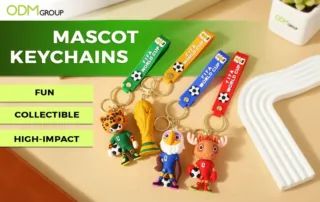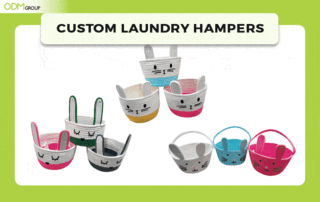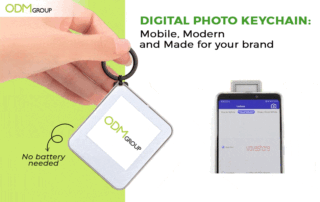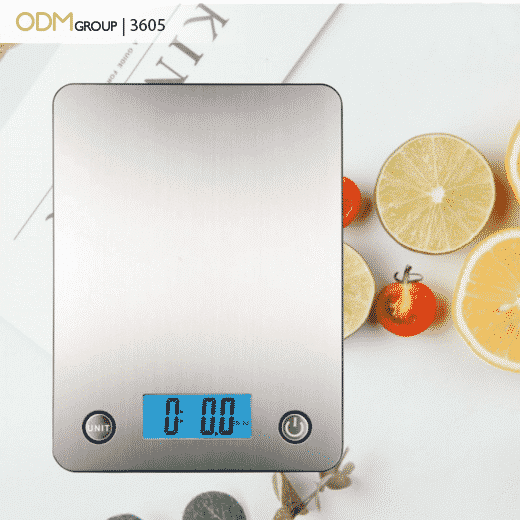Direct mail advertising is a form of direct marketing that delivers physical promotional materials, such as flyers, catalogs, or letters, straight to a prospect’s mailbox via postal or courier services. In contrast, email marketing serves as its digital counterpart.
As a marketer, you might be wondering, “Does it still work in this modern and digital world ?” The answer is YES. Done right, direct mail doesn’t just add another touchpoint. It amplifies your other channels, creates a memorable brand presence, and builds lasting customer loyalty.
In this blog, let’s talk about what direct mail advertising is, its different types, how it can help modern marketers, how to implement an effective one, and what its advantages are.

What Is Direct Mail Advertising?
Direct mail advertising is a type of direct marketing that involves sending physical promotional content directly to consumers’ mailboxes.
This could be anything from a postcard announcing a new store opening to a glossy catalog featuring your seasonal product line. What makes it powerful is the physical connection it creates. People can touch it, hold it, pin it on their fridge, or keep it on their desks.
Why It Matters Today
Digital marketing has scale, speed, and reach. But it also comes with digital fatigue: consumers are bombarded with emails, social ads, and push notifications daily. Direct mail cuts through that clutter by being tangible, personal, and often more trusted.
Key Features of Direct Mail Advertising:
-
Tangibility – A real, physical piece that grabs attention.
-
Targeting – Lists can be built around customer demographics, interests, or purchase history.
-
Personalization – Messages can be customized to each recipient.
-
Measurability – QR codes, unique URLs, and tracking numbers help track responses.
Types of Direct Mail Advertising
Not all direct mail is created equal. Choosing the right type depends on your audience, campaign goals, and budget. Here are the most common and effective forms of direct mail advertising you can integrate into your campaigns.
One of the simplest and most cost-effective forms of direct mail. They are highly visual, easy to design, and don’t require envelopes, which means the recipient sees the message instantly. They can be used for seasonal promotions, limited-time sales, or quick announcements that don’t need lengthy explanations.
These include boxes or packages, which are premium pieces that stand out in the mailbox.
Because of their three-dimensional format, they instantly create curiosity and have a higher perceived value.
These are often used for B2B campaigns, VIP prospects, or influencer outreach, where making a strong impression is the priority.

Bring a formal and personal touch to direct mail campaigns. They often feel more private and are frequently used by financial services, professional organizations, and nonprofits.
A well-written letter can build trust, convey exclusivity, and make recipients feel like they are receiving a one-to-one message.
Are a tried-and-true format that showcase an entire product line in one package. They are particularly effective for retail, fashion, and home décor industries because customers enjoy browsing through a printed collection at their own pace.
Even in the digital era, catalogs continue to inspire purchases, both offline and online, by creating an immersive shopping experience.
Serve as powerful direct-response tools.
By offering discounts or free items, they encourage recipients to take immediate action, whether that means visiting a store, making a purchase, or signing up for a service.
They are especially effective for retailers, restaurants, and subscription-based businesses looking to boost short-term sales.
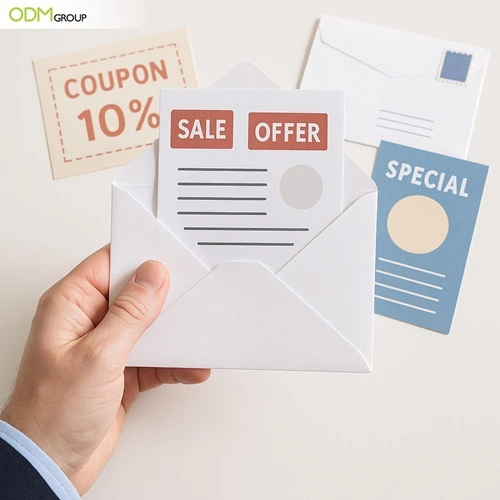
Provide a balance of detail and portability. They are versatile tools often used for event invitations, product launches, or restaurant menus. Their compact size allows marketers to present information clearly while still giving customers something easy to keep and reference later.
Why Direct Mail Advertising Still Works in the Digital Age
Many marketers assume direct mail is outdated. But research shows the opposite: it continues to outperform digital in response rates and engagement. Here’s why it remains relevant.
1. It Cuts Through Digital Noise
Consumers face inbox overload and banner blindness. Direct mail is rare enough today that it immediately captures attention.
2. It Creates Tangible Memories
The physical nature of mail creates multi-sensory engagement, such as sight, touch, and sometimes even smell (think scented cards or packaging). This makes messages more memorable.
3. It Delivers Higher Response Rates
According to industry studies, direct mail response rates are 4–9%, far higher than email (0.6%). That’s a powerful ROI when campaigns are executed well.
4. It Builds Trust
Many consumers view physical mail as more credible than digital advertisements, which are often dismissed as spam.
5. It Integrates with Digital Channels
Direct mail is no longer standalone. With QR codes, personalized URLs, and social media tie-ins, it becomes part of a multi-channel experience.
Implementing an Effective Direct Mail Campaign
Running a successful direct mail campaign is not about sending random postcards or letters. It’s about strategy, precision, and integration. Each stage of the process matters, from planning and targeting to execution and measurement.
Below is a step-by-step framework marketers can follow to ensure their direct mail efforts deliver real results.

1. Define Your Objective Clearly
Every campaign starts with a goal. Do you want to increase sales, generate leads, drive traffic to a store, or simply build brand awareness?
Having a clear objective ensures that every design choice, message, and call-to-action aligns with the desired outcome. Without this focus, it’s easy to waste money and resources on mailers that look good but don’t deliver measurable results.
2. Identify and Segment Your Audience
Direct mail is most effective when it’s targeted. Instead of sending the same message to thousands of random households, segment your audience based on demographics, geographic location, purchase history, or behavioral data.
For example, repeat customers may receive loyalty rewards, while first-time prospects may receive an introductory offer. Segmentation increases relevance and significantly boosts response rates.
3. Craft a Strong, Customer-Focused Message
The heart of any campaign is the message. Keep it simple, benefit-driven, and customer-oriented. Instead of focusing only on product features, highlight how your solution makes life easier, saves money, or solves a pain point.
Adding personalization, such as using the recipient’s name or referencing past interactions, makes the message more engaging and trustworthy.
4. Design for Maximum Impact
A strong design ensures your mailer stands out in a stack of envelopes. Use bold headlines, striking visuals, and clean layouts to capture attention quickly.
The design should also reflect your brand identity, whether through the use of consistent colors, fonts, or logo placement. Personalization extends here as well.
5. Include a Clear and Compelling Call-to-Action (CTA)
Never leave your audience guessing. Every direct mail piece should tell recipients exactly what to do next, like call a number, visit a website, scan a QR code, or redeem a coupon.
The CTA should be visible, concise, and compelling. Adding urgency, such as limited-time offers or exclusive discounts, pushes people to act quickly rather than setting the mail aside.
6. Integrate with Digital Channels for Greater Reach
The best direct mail campaigns are not isolated. They work in tandem with digital marketing. QR codes can lead customers to personalized landing pages, while custom discount codes make online tracking seamless.
Likewise, pairing direct mail with email reminders, retargeting ads, or social media campaigns creates a cohesive experience across platforms, reinforcing the message at multiple touchpoints.
7. Track, Measure, and Optimize Results
One of the biggest mistakes marketers make is failing to measure campaign performance. Use tools like personalized URLs, trackable phone numbers, or redemption codes to monitor responses.
Analyze which audience segments, designs, or offers performed best. This data allows you to refine future campaigns, reduce costs, and continually improve ROI.
Advantages of Direct Mail Advertising
Direct mail advertising remains one of the most effective ways to reach and influence customers. Unlike purely digital efforts, it has unique strengths that make it a powerful addition to modern marketing campaigns. Here are the main advantages marketers should keep in mind:
Consumers are more likely to open and interact with physical mail than with promotional emails. A letter or catalog often gets handled, skimmed, and sometimes even displayed in the home, giving your brand multiple impressions instead of just one fleeting glance.
The tactile nature of direct mail leaves a lasting impression. Neuroscience studies indicate that people remember messages more effectively when they are experienced physically. This makes direct mail ideal for building brand recognition and recall.
With advanced data analytics and customer insights, marketers can target specific demographics, geographic areas, or behavioral segments. For example, a retailer can send loyalty offers to existing customers while introducing new collections to high-value prospects in nearby neighborhoods.
As more companies shift to digital advertising, mailboxes are less cluttered than email inboxes. This gives your message more space to stand out and capture attention. A well-designed piece can dominate a prospect’s attention in ways that digital ads often can’t.
From retail and hospitality to finance and B2B, direct mail works across sectors. Whether you’re promoting a restaurant menu, a luxury brand catalog, or a nonprofit fundraising campaign, the format can be adapted to fit different goals and audiences.
Unlike digital ads, which rely on sight and sound, direct mail engages touch, and sometimes even smell with scented inks or textured finishes. This sensory interaction makes your brand more memorable and emotionally resonant.
Disadvantages of Direct Mail Advertising (and How to Overcome Them)
Like any marketing channel, direct mail comes with its challenges. But the good news is that with careful planning and smart execution, most of these drawbacks can be minimized or even turned into strengths.
Printing, design, and postage can add up quickly. For large-scale campaigns, costs per contact are often higher than email or social ads.
How to Overcome: Focus on targeted mailings rather than mass distribution. Personalization and segmentation increase ROI by ensuring each mailer reaches the right audience. Bulk mailing discounts and eco-friendly print partners can also reduce expenses.
Unlike email campaigns that can be launched in a day, direct mail requires planning, production, and delivery, which takes more time.
How to Overcome: Build direct mail into your broader marketing calendar. Use digital campaigns for real-time communication and direct mail for longer-term brand building or event promotion. When combined, both channels cover immediate and strategic needs.
Paper waste and printing can raise sustainability issues, especially for eco-conscious brands.
How to Overcome: Use recycled or FSC-certified paper, soy-based inks, and biodegradable packaging. Highlight your eco-friendly practices in the mailer itself—this not only reduces guilt but also enhances your brand’s green reputation.
It’s not always easy to attribute sales directly to a mail piece, especially if the customer acts weeks later.
How to Overcome: Leverage tools like QR codes, personalized URLs, and unique discount codes. These give you clear, trackable data. Integrating direct mail with CRM systems also helps measure its role in customer journeys.
Adding Promotional Products to Direct Mail Advertising
Direct mail doesn’t have to be limited to paper materials, such as postcards or flyers. One of the most effective ways to make your campaign stand out is by including direct mail promotional products.
These items extend the life of your campaign because recipients are more likely to keep and use them, keeping your brand visible long after the initial mail is opened.
1. Bookmark Clips and Bookmarks
These are cost-effective, lightweight, and practical. A bookmark clip or custom-printed bookmark not only promotes your brand but also offers ongoing visibility every time the recipient opens a book or notebook. They are especially effective for education, publishing, or lifestyle brands.
2. Stickers and Decals
Stickers are fun, customizable, and versatile. Recipients may use them on laptops, water bottles, or notebooks, effectively turning them into brand ambassadors in everyday life. They’re lightweight and cheap to produce, making them perfect for mail campaigns.
3. Mini Calendars
Desk calendars, wallet-sized versions, or magnetic fridge calendars are popular because they serve a long-term purpose. A well-designed branded calendar ensures your business stays top of the customer every day of the year.
4. Greeting Cards or Thank-You Cards
Adding a personal touch with a branded greeting card makes the message feel more heartfelt. Cards can be seasonal, celebratory, or thank-you notes that strengthen customer loyalty. They can also carry discount codes or QR links for added functionality.
5. Magnets
Small branded magnets, particularly with calendars or emergency contact information, often end up on refrigerators or office boards. This guarantees visibility in daily life while being inexpensive to mail.
6. Keychains
Slim, lightweight keychains can be included in small envelopes without adding much postage cost. When branded creatively, they can be both practical and memorable.
7. Compact Tech Accessories
Items like phone grips, cable organizers, or microfiber screen cleaners can fit into flat envelopes. These are especially attractive for brands targeting younger, tech-savvy demographics.
8. Branded Inserts in Small Boxes
If your campaign allows for dimensional mailers, you can add promotional products such as mini hand sanitizers, pens, USB drives, or tea bags. These create a premium feel and make the recipient more likely to remember your brand.
9. Coins
Custom promotional coins are a premium option that feel collectible and unique. They can be designed with brand logos, event themes, or limited-edition artwork, making them ideal for commemorative campaigns, loyalty rewards, or VIP client mailers.
Because coins are compact and durable, they fit easily into padded envelopes or small boxes while adding a sense of exclusivity that paper-based promotions can’t match.
The Future of Direct Mail Advertising
Direct mail advertising continues to thrive because it delivers what digital channels often can’t. In a crowded online space, a physical mailer cuts through the noise, builds trust, and drives action. When integrated with digital tools like QR codes, personalized URLs, and retargeting ads, it becomes a powerful multi-channel strategy.
Adding promotional products makes campaigns even more effective. A bookmark, coin, or mini calendar inside an envelope keeps your brand in the recipient’s hands long after the initial message is read.
This is where ODM can help. We design and source custom promotional products that fit seamlessly into direct mail campaigns, from eco-friendly inserts to collectible items. With our expertise in product development and strong manufacturing network in China and Vietnam, we ensure your mailers stand out, deliver value, and leave a lasting impression.
Are you ready to elevate your next direct mail advertising campaign? Partner with us today to create memorable, results-driven campaigns that connect with your audience and amplify your brand. Contact our team, and we’ll be glad to assist with your marketing needs.
Browse our wide range of promotional products…
FAQs about Direct Mail Advertising
Here are some of the most common questions we hear, along with clear answers to help guide your strategy.
What types of businesses benefit most from direct mail?
Almost every industry can use direct mail effectively. Retailers use it to promote sales, B2B companies leverage it for account-based marketing, nonprofits rely on it for fundraising, and service providers use it for loyalty building. The key is tailoring the message and format to your audience and objectives.
How can I make my direct mail campaign more sustainable?
Sustainability is a growing concern, and customers appreciate eco-friendly practices. You can use recycled or FSC-certified paper, soy-based inks, and biodegradable packaging. Keeping campaigns targeted also reduces waste. Highlighting these choices in your mailer even enhances your brand’s eco-conscious image.
Is direct mail only for large companies with big budgets?
No—small and medium businesses can benefit just as much, if not more. Local retailers, restaurants, and service providers often see excellent results with geo-targeted campaigns. By mailing to smaller, highly relevant lists, even businesses with limited budgets can achieve strong engagement without overspending.
How do I track results from a direct mail campaign?
Tracking has become easier than ever. You can use personalized URLs, QR codes, and unique discount codes to monitor responses directly. Pairing your campaign with CRM software also lets you measure conversion rates and customer engagement across multiple channels, so you see exactly how direct mail impacts ROI.







